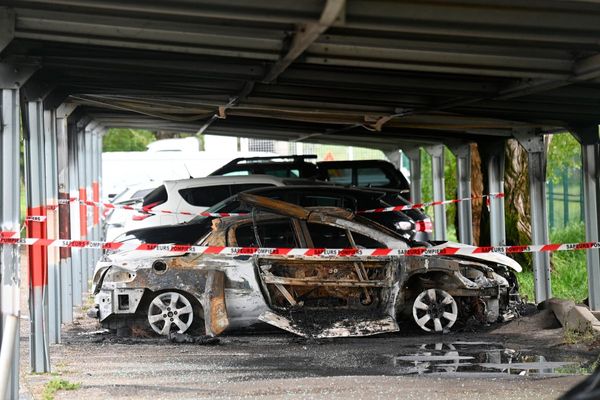
This week's exodus of thousands of people fleeing for their lives from Myanmar's Karen State into Thailand's Mae Sot district in Tak was not unexpected.
Prior to this, several agencies including those in Thai security, community leaders along the border, and military leaders of the Karen National Union (KNU) shared the opinion that this dry season -- the end of November to late April -- will see a fierce offensive from the Myanmar junta army aimed at suppressing armed ethnic organisations, particularly the KNU.
Since early this year, the Myanmar army has carried out airstrikes on KNU territory causing tens of thousands of villagers to hide in forest areas near the Salween River.
Some, as we have seen, have ventured across to Thailand for refuge.
"According to people from inside, this dry season will see an escalation in fighting and a worsening of the situation," said General Baw Kyaw Heh, deputy commander of the Karen National Liberation Army (KNLA) of the KNU said in an interview with Transborder News last month.
"I think the Myanmar junta will certainly crack down on us. They will start by assessing the opposition groups and identify which groups should be prioritised for such repression," the general said.
"The Myanmar army will not suppress all the groups at the same time. They will analyse the forces of each group, the power of each civilian group and further analyse which groups would be the first to be repressed," he said.

"They will adopt a scorched-earth campaign to terrorise people," he said.
"The Myanmar army does have plans. They will not stick with the status quo."
The general's "status quo" is a reference to the situation where various armed groups including those made up of political dissenters have taken up arms to resist the junta.
Of late, the Myanmar army has opted to attack the KNU Army's Brigade 6 in Myawaddy adjacent to Tak's Mae Sot district which raises questions as to why the junta has decided to start its war from this point?
Myawaddy is a trade hub between Thailand and Myanmar which in the past housed a key Karen stronghold.
But after a protracted war between the KNU and the Myanmar army, the latter adopted a divide and rule approach by encouraging part of the Karen forces to form the Border Guard Force (BGF).
This basically transformed them from an opposition group to an army corps allied with the Myanmar junta. As a result, these Karen soldiers have been offered privileges, particularly of the financial kind.
Myawaddy has developed rapidly in the past few years. Many casinos have sprung up as have hotels, commercial buildings, and entertainment parlours with huge investments from Chinese investors.
Meanwhile, the Karen splinter group, which has since become part of the BGF, has benefited from the concessional rights the Myanmar military gave to the Chinese investors to turn the area along the Moei River into the Shwe Kokko Special Economic Zone.
It has been speculated that the investment of Chinese businesspeople in this area is part of the Belt and Road Initiative and soon this city will be inundated with people from China.
The arrival of Chinese investors and related business investments has increased the demand for electricity in the area, resulting in a push to develop new power production sources including a hydropower dam project on the Salween River.
This could be a reason why the Myanmar military junta is waging war against the KNU Brigade 5, which has control over the Salween River at the border between Thailand and Myanmar's Karen State.
Their taking of the area would ensure the junta's control over the dam site.
Recently, a group of Chinese businesspeople, who proposed to fund the construction of tunnels to divert water from the Yuam-Salween Rivers to the Bhumibol Dam, told veteran Thai politician Veerakorn Kamprakob, MP of Nakhon Sawan province from the Palang Pracharath Party (PPRP), that they're negotiating with the Myanmar junta to seek approval to build dams on the Salween River.
Apparently, the Myanmar military has had no problem with this proposal.
Chinese investments in Myawaddy have now become part of the complicated reasons which explain why fighting has been waged between the Myanmar junta and the KNU armed forces.
In the aftermath of the military coup in Myanmar in February 2021, many people came out in opposition and many have since had to escape military suppression.
Some of them, particularly the students and youth have sought to receive basic armed training with ethnic armed organisations and formed the People's Defense Force (PDF).
The area under the control of the KNU's Brigade 6 is known as one of the key training grounds for the PDF, a point well known to the Myanmar army, so it's unsurprising that the KNU's Brigade 6 has become an early target for the junta's efforts.
Now we are in the position where it's expected that tens of thousands of people will flee the conflict and many of them will want to cross the Moei River in a bid to seek refuge in Thailand.
A majority of the people, however, will hide in the forests or by the river in their homeland where they will face suffering brought about by lack of food and exposure.
With the colder months and the lowering of temperatures at night, they will be left with insufficient clothing and blankets, leaving them more at risk of illness which they will have scant medicine to treat.
There seems little scope for the conflict in the area to end any time soon.
Meanwhile, the Karen people will certainly face yet more suffering. It's a dire situation just on our border.







